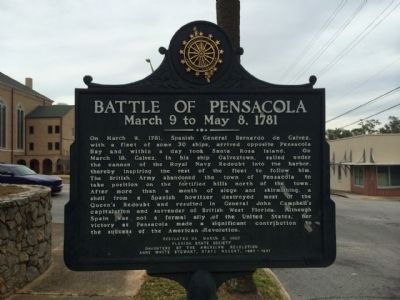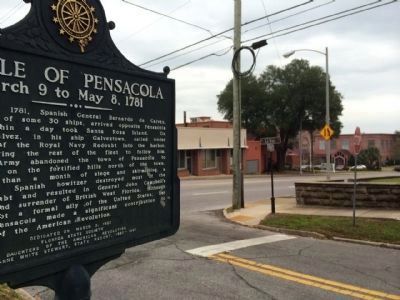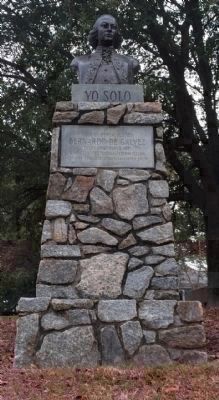Pensacola in Escambia County, Florida — The American South (South Atlantic)
Battle of Pensacola
March 9 to May 8, 1781
Erected 1997 by the Florida State Society, Daughters of the American Revolution.
Topics and series. This historical marker is listed in these topic lists: Colonial Era • Forts and Castles • War, US Revolutionary • Waterways & Vessels. In addition, it is included in the Daughters of the American Revolution series list. A significant historical month for this entry is March 1932.
Location. 30° 25.111′ N, 87° 13.013′ W. Marker is in Pensacola, Florida , in Escambia County. Marker is at the intersection of West La Rua Street and North Palafox Street, on the left when traveling east on West La Rua Street. Located in Fort George Park. Touch for map. Marker is at or near this postal address: 501 North Palafox Street, Pensacola FL 32501, United States of America. Touch for directions.
Other nearby markers. At least 8 other markers are within walking distance of this marker. Fort George (within shouting distance of this marker); a different marker also named Fort George (about 300 feet away, measured in a direct line); Original Site of Pensacola Junior College (about 700 feet away); Boysen-Perry House (about 700 feet away); Christ Episcopal Church (about 700 feet away); First Methodist Church (about 700 feet away); General Bernardo de Gálvez and the "Siege of Pensacola" (approx. 0.2 miles away); Rough Riders (approx. 0.2 miles away). Touch for a list and map of all markers in Pensacola.
Also see . . . Siege of Pensacola, Wikipedia entry. (Submitted on March 12, 2014, by Mark Hilton of Montgomery, Alabama.)
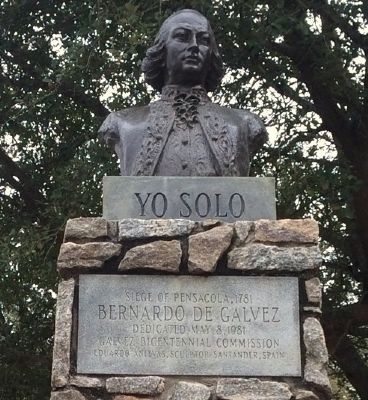
Photographed By Mark Hilton, March 10, 2014
4. “Yo Solo” — “I Alone”
Siege of Pensacola, 1781
Bernardo de Galvez
Siege of Pensacola, 1781
Bernardo de Galvez
Inscription continues, “Dedicated May 8, 1981, Galvez Bicentennial Commission. Eduardo Anievas, Sculptor, Santander, Spain”. “Yo Solo” comes from the inscription on General Galvez’ coat of arms, created when he was named Count by the Spanish Crown. It is in reference to his singular determination to attack the British at Pensacola without the cooperation of the rest of the fleet.
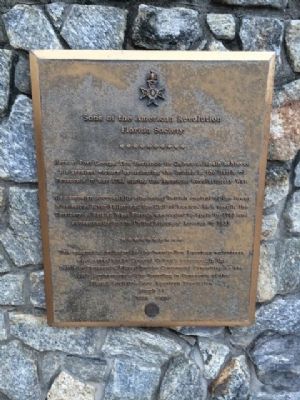
Photographed By Mark Hilton, March 10, 2014
5. An additional Battle of Pensacola marker
Florida Society
Here at Fort George, Don Bernardo de Galvez of Spain achieved his greatest victory by defeating the British in the Battle of Pensacola in May 1781 during the American Revolutionary War.
The campaign successfully eliminated British control of the lower Mississippi River Valley and the Gulf of Mexico. As a result, the Territory of British West Florida was ceded to Spain in 1783 and subsequently to the United States of America in 1821.
This plaque is dedicated to the twenty-five American volunteers who served under General Galvez’s command in the Battle of Pensacola. Given by the Centennial Committee on the 100th anniversary of the founding in Pensacola of the Florida Society, Sons of American Revolution.
March 24
1886-1986
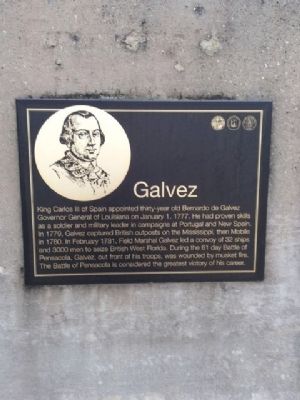
Photographed By Mark Hilton, March 10, 2014
6. General Bernardo de Galvez
King Carlos III of Spain appointed thirty-year old Benardo de Galvez
Governor General of Louisiana on January 1, 1777. He had proven skills
as a soldier and military leader in campaigns at Portugal and New Spain.
In 1779, Galvez captured British outposts on the Mississippi, then Mobile
in 1780. In February 1781, Field Marshal Galvez led a convoy of 32 ships
and 3000 men to seize British West Florida. During the 61 day Battle of
Pensacola, Galvez, out front of his troops, was wounded by musket fire.
The Battle of Pensacola is considered the greatest victory of his career.
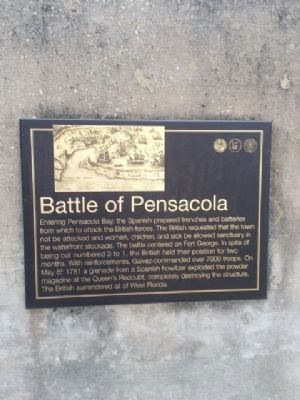
Photographed By Mark Hilton, March 10, 2014
7. Battle of Pensacola
Entering Pensacola Bay, the Spanish prepared trenches and batteries from which to attack the British forces. The British requested that the town not be attacked and women, children, and sick be allowed sanctuary in the waterfront stockade. The battle centered on Fort George. In spite of being out numbered 3 to 1, the British held their position for two months. With reinforcements, Galvez commanded over 7000 troops. On May 8th, 1781 a grenade from a Spanish howitzer exploded the powder magazine at the Queen's Redoubt, completely destroying the structure.
The British surrendered all of West Florida.
The British surrendered all of West Florida.
Credits. This page was last revised on June 12, 2022. It was originally submitted on March 12, 2014, by Mark Hilton of Montgomery, Alabama. This page has been viewed 1,773 times since then and 78 times this year. Photos: 1, 2, 3, 4, 5, 6, 7. submitted on March 12, 2014, by Mark Hilton of Montgomery, Alabama. • Bill Pfingsten was the editor who published this page.
